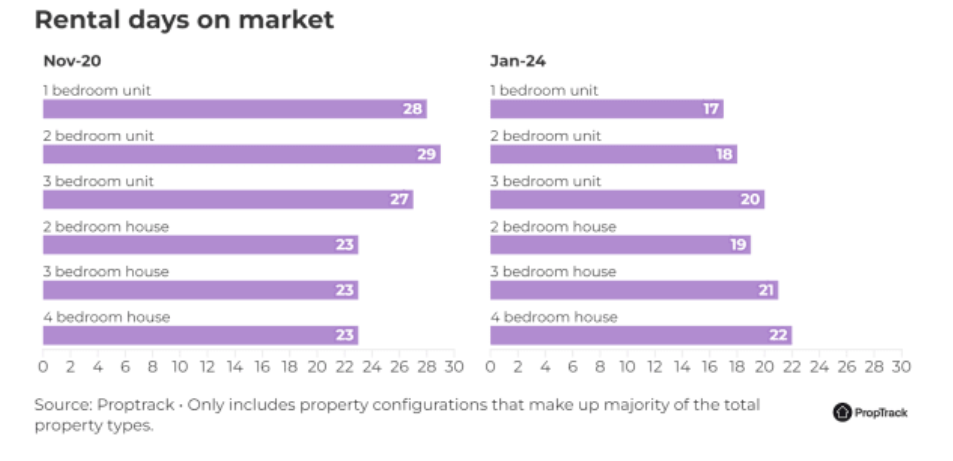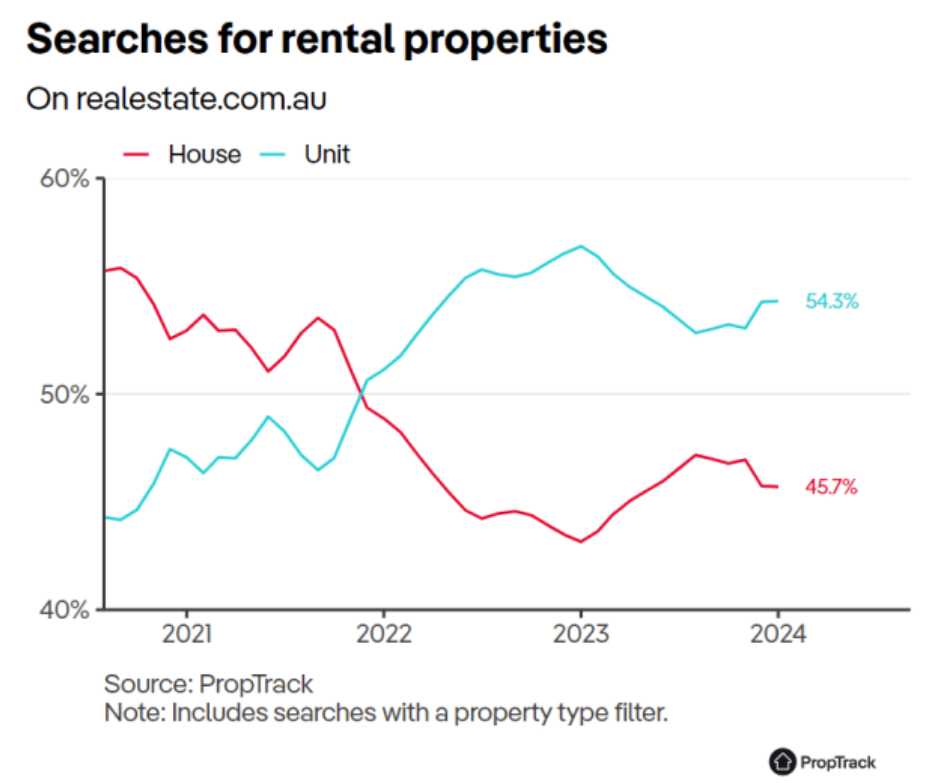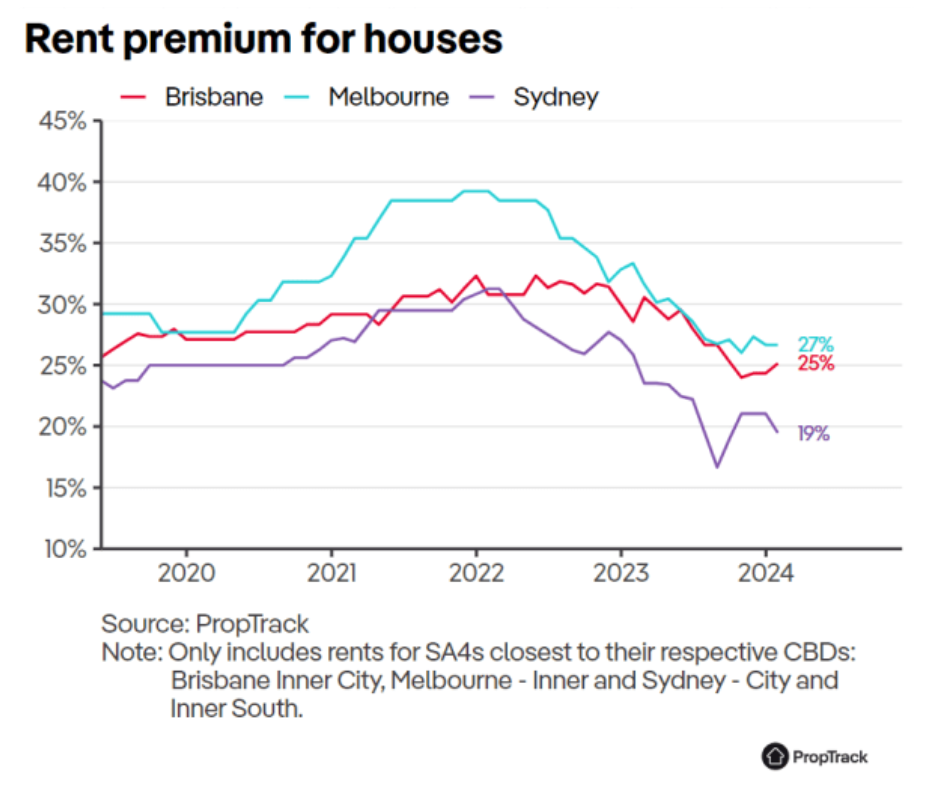

During the COVID-19 pandemic, demand for larger, suburban homes surged due to remote work and lifestyle changes, but recent PropTrack data indicated a stark reversal, with renters now preferring smaller, urban dwellings.
The aftermath of the pandemic has seen a remarkable increase in the demand for rental units, with data indicating that units are now leasing 36% faster than in November 2020, compared to a 9% increase for houses. This shift underlines a growing demand for units, surpassing the recovery pace in inner-city markets.

Analysis of rental property searches showed a clear preference shift among renters.
In late 2020 when the pandemic was still affecting everyday life, there were many more searches on realestate.com.au for houses than units,” said Megan Lieu, economic analyst at REA Group. “Houses accounted for 56% of all rental searches, whereas units only accounted for 44%.
“The transition to remote working steered renters towards houses, which are typically larger and better able to accommodate for the increased need for space and privacy.”
That changed in late 2021 and early 2022, following the lifting of most restrictions, and has continued to the present day.
The preference for units has increased, with the unit share of searches rising by 10 percentage points over the past three years, indicating a shift in the attributes people value in a home.
Not only were renters more inclined towards units but were also less willing to pay a premium for houses.

Back in 2020, the premium for renting a typical house, as opposed to a unit near the CBD in major cities, stood at approximately 27-28% in Brisbane and Melbourne, and 25% in Sydney.
In 2021, the premium for renting houses over units increased, peaking in early 2022, with Melbourne’s premium nearing 40%. This indicated a significant shift in preference towards houses, showing people’s willingness to pay considerably more for larger living spaces.
However, this trend has shifted in recent times.
“Renters are no longer paying the steep premiums for houses seen at the beginning of 2022,” Lieu said. “In fact, premiums in Sydney are now below pre-pandemic levels, while in Melbourne and Brisbane, premiums have returned to similar levels seen before the pandemic.”
The reopening of offices and the return to in-person work have underscored the importance of living closer to city centers. Units, typically located near public transport and key urban areas, offer both convenience and cost savings, making them an attractive option for today's renters.
Another factor making units more attractive is the higher vacancy rate compared to houses. With a vacancy rate of 1.6% for units, as opposed to just 0.9% for houses, renters face less competition and have a broader selection of units to choose from.
As the cost-of-living crisis prompts renters to seek more affordable housing solutions, such as shared housing, the market may see fluctuating demands between larger houses and smaller units, Lieu said.
The ongoing normalisation of hybrid work models and urban revitalisation efforts will likely continue to influence renter preferences and market trends.
Get the hottest and freshest mortgage news delivered right into your inbox. Subscribe now to our FREE daily newsletter.
